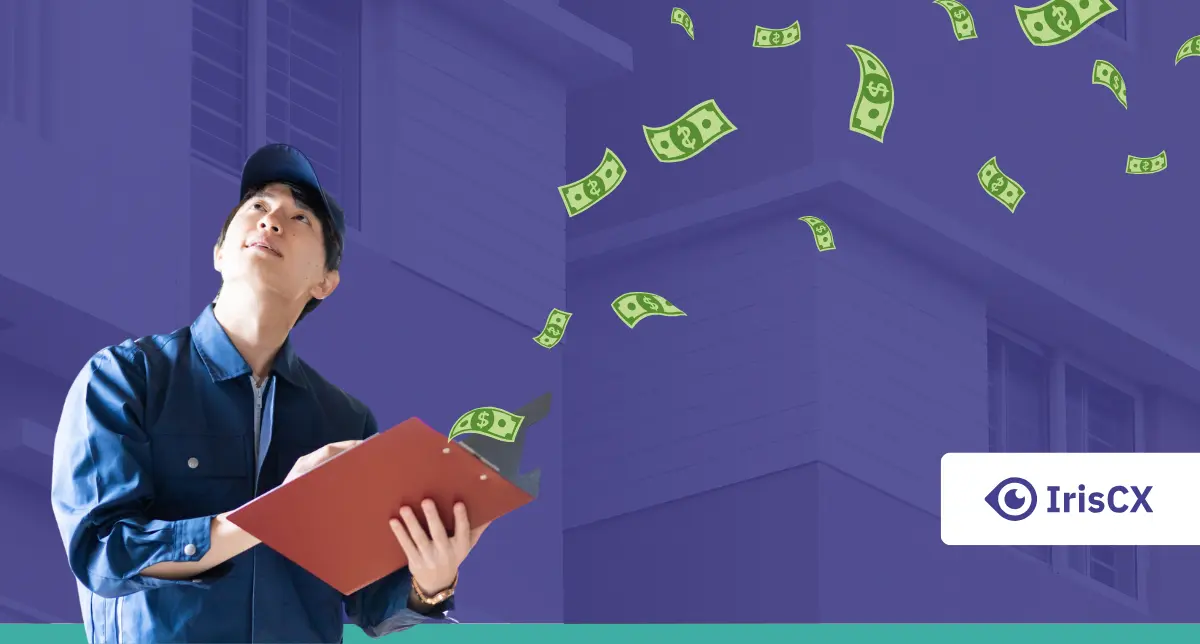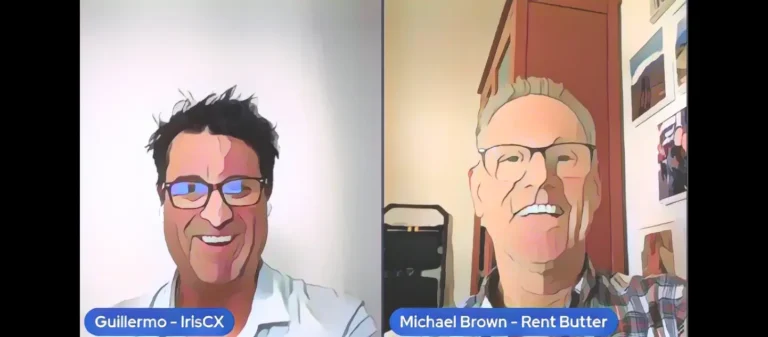The average value of work orders is growing every month and approaching the average not-to-exceed (NTE) limit of $250. Without triage, you’re funding an escalating expense cycle you can’t control.
If you’ve noticed your maintenance invoices creeping up month after month, you’re not imagining things. Industry data from Property Meld shows that the average work order invoice jumped from $227.50 in August 2024 to $248.36 in August 2025. That’s a 9.7% increase, more than double the general inflation rate.
Rising labor costs and material prices are contributors. But there is also a systemic issue in how work orders are managed from intake to completion. When property managers auto-dispatch without proper triage, they’re funding an escalating expense cycle they can’t control.
The NTE Trap: When Work Orders Gravitate Toward Your Limits
According to benchmarking data, the average work order invoice has been in the range of $240–248. The standard not-to-exceed (NTE) limit is $250.
In other words, the tail is wagging the dog. The NTE limit is affecting invoice amounts.

For those unfamiliar, an NTE limit allows vendors to complete work under a certain dollar amount without seeking additional authorization. It’s designed to speed up operations and reduce administrative burden. But when you set an NTE threshold and auto-dispatch work orders, invoices naturally gravitate toward that ceiling.
Why? Vendors know the limit. Work expands to meet available budget. And without proper diagnosis before dispatch, technicians default to a “replace, replace, replace” mentality that pushes costs higher.
The escalation cycle looks like this:
- You set a $250 NTE to streamline operations.
- Average invoices climb from $232 to $235 to $2405.
- You raise the NTE to $300 to maintain efficiency.
- Invoices begin climbing toward the new limit at 4-5% per month.
When invoices consistently approach your authorization limits, it becomes nearly impossible to identify genuine cost increases versus behavioral billing patterns.
Without proper work order triage, your vendor invoice management system can only track costs, not control them.
Industry analyst Todd Ortscheid notes in his September 2025 newsletter: “Inflation is on the rise, and maintenance inflation is even worse.” When core inflation sits around 4% but maintenance costs are growing at 9.7% year-over-year, the gap becomes unsustainable, especially when operators can’t raise rents fast enough to keep pace.
The Problem with Diagnostic Fees
Every time you dispatch a technician, you’re paying approximately $65 for diagnostic fees. This diagnostic cost is now baked into that $250 NTE limit, but many property managers don’t track it as a separate line item.
When technicians arrive without understanding the actual problem:
- They spend time (and your money) diagnosing the issue on-site.
- They often recommend replacement rather than repair.
- You’ve paid $65 just to learn what the problem is.
- Multiple trips compound the diagnostic costs.
Consider an average of 1.7 trips per work order. Some portfolios see even higher rates. At scale, if you’re managing properties generating 31,230 work orders annually, that’s approximately 53,091 trips. At $107 per trip, you’re looking at $5.7 million in annual trip-related costs.
Three Ways Diagnostic Fees Compound Your Costs
1. You pay for diagnosis that could have been done remotely
A 60-90 second video call with the resident could provide the same diagnostic information for a fraction of the cost.
2. You pay for work orders that didn’t need to happen
Many issues can be resolved with simple resident education or guidance, no truck roll required.
3. You can’t optimize dispatch decisions
Without proper diagnosis, you can’t pre-authorize repairs, order parts in advance, or dispatch the right level of technician for the job.
The challenge for vendor invoice management is that these diagnostic fees rarely appear as separate line items. They’re absorbed into the total invoice cost, making it difficult to track how much you’re paying just for technicians to figure out what’s wrong. Effective vendor invoice management requires visibility into these hidden costs before you can control them.
According to Property Meld’s data, plumbing has seen a particularly dramatic shift: in October 2025, 56.9% more plumbing work orders were scheduled with vendors than in-house technicians over the last 90 days, up from 34.5% during the same period last year. This growing reliance on vendors for specialized repairs directly impacts costs, especially when dispatch decisions are made without full diagnostic context.
The 30-40% Opportunity You’re Missing
Here’s the number that should change how you think about work order management: 30-40% of maintenance dispatches could be diverted with proper triage.
Property management companies implementing triage protocols are seeing these results consistently. The question every operator should be asking is: “If I went back and looked at my last 100 work orders, how many could have been diverted with 60-90 seconds of review?”
What Is Work Order Triage?
Work order triage is the practice of reviewing and assessing maintenance requests before dispatching a technician. It typically involves:
- Getting visual context (photos or video) to understand the actual issue
- Determining if the problem can be resolved remotely
- Identifying the right resource, timing, and approach
- Making informed dispatch decisions rather than automatic ones
This process takes 60-90 seconds per work order but can return $65-200 in savings per request.
Five Categories of Divertible Work Orders
1. User error and education issues
Simple misunderstandings that can be resolved with a phone call or video guidance. Example: Resident doesn’t know how to reset their thermostat.
2. Low-complexity issues
Problems residents can handle themselves with basic instructions. Example: Tripped circuit breaker or clogged garbage disposal.
3. Timing flexibility
Issues that aren’t urgent and can be bundled with scheduled maintenance visits. Example: Minor cosmetic repairs or routine inspections.
4. Wrong resource initially selected
Requests that need a specialized technician, not a general vendor. Example: HVAC issue incorrectly categorized as general maintenance.
5. Parts needed first
Situations where ordering parts before dispatch avoids multiple trips. Example: Specific appliance replacement part identified through remote diagnosis.
The Real-World Impact of Remote Triage
When property managers implement remote triage and visual assessment, they could see projected outcomes directly impacting NOI :
- 60% of maintenance issues resolved remotely in an average of 8 minutes
- Work orders reduced from 4.28 to 3.28 per unit annually
- Trips per work order decreased from 1.7 to 1.1
- Cost per unit dropped from $778 to $386 per year
Calculate Your Opportunity
Want to know what you’re leaving on the table? Use this simple formula:
Monthly maintenance spend × 0.35 × 12 months = Annual opportunity
For a portfolio spending $100,000 monthly on maintenance:
$100,000 × 0.35 × 12 = $420,000 annual opportunity
Add the diagnostic fee recovery for avoided dispatches:
Number of monthly work orders × 0.35 × $65 × 12 months
For 1,000 monthly work orders:
1,000 × 0.35 × $65 × 12 = $273,000 in additional savings
Total opportunity: $693,000 annually
Your Three Strategic Choices to Manage Work Order Costs
When faced with rising work order costs, property managers typically consider three options:
Option 1: Change Vendors (Not Recommended)
Switching to cheaper 1099 contractors or discount vendors might seem like a quick fix, but it introduces significant risks:
- Lower quality work requiring repeat visits
- Unreliable service that frustrates residents
- Potential liability issues from uninsured or underqualified technicians
- Doesn’t solve the root problem of poor work order management
Bottom line: This approach trades short-term cost savings for long-term problems.
Option 2: Raise NTE Limits (Expensive)
Increasing your NTE from $250 to $300 provides temporary relief but predictable outcomes:
- Invoices will climb to meet the new limit within months
- You’re funding cost inflation, not controlling it
- Creates a perpetual cycle of raising limits and increasing expenses
- No improvement in operational efficiency
Bottom line: This is the most expensive non-solution.
Option 3: Implement Work Order Triage (Profitable)
Reviewing work orders for 60-90 seconds before dispatch delivers:
- Immediate cost savings: $65-200 per optimized work order
- Long-term cost control: 25-30% reduction in maintenance expenses
- Better resident experience: Faster resolution times
- Predictable budgets: Data-driven spending decisions
Bottom line: This is the only option that addresses root causes.
Why Most Organizations Choose Wrong
Despite the clear financial case for triage, many property management companies continue with auto-dispatch. Why?
Work orders seem like an efficiency gain on the surface
Auto-dispatch feels fast because it eliminates the review step. But speed without efficiency is just expensive chaos.
Lack of visibility into true costs
Most systems don’t break out diagnostic fees, trip costs, or diverted work order savings, making it impossible to see the real impact.
Processing vs. preventing
Traditional property management software excels at tracking work orders but does nothing to prevent unnecessary ones. Simply processing a work order (before any work gets done) costs approximately $50.
Industry wisdom says: Solving service requests is 10 times cheaper than solving work orders. Yet most organizations focus their technology investments on work order management rather than work order prevention.
Building Effective Work Order Management
Property Meld’s October 2025 Benchmarking Report reveals that repair speeds improved to 7.0 days (down from 7.2 days last month), but this is still above the critical 6.8-day threshold where resident satisfaction begins to decline. The report notes that once repair speeds exceed 6.8 days, resident satisfaction drops, and residents ranked maintenance as the #2 reason they leave a property, while property management companies ranked it #12.
This perception gap speaks volumes about how work order management impacts resident retention.
The Technology Factor
Effective work order management requires tools that enable pre-dispatch decision-making:
Visual intake capabilities
Residents submit photos or videos with maintenance requests, providing context before any technician is dispatched.
Remote triage platforms
Specialists can assess issues in 60-90 seconds and make informed dispatch decisions or guide residents to immediate resolution.
Integrated communication
Property Meld’s data shows that 5-7 messages per work order strikes the right balance between responsiveness and efficiency. One vendor averaged 17 messages per work order with a 0.7-hour response time and saw resident satisfaction plummet to 3.6 out of 5.
Centralized operations
Single-family rental management has operated with centralized maintenance by necessity. Multifamily operators are increasingly adopting this model to gain similar efficiencies.
The Workforce Implications
Better work order management addresses critical staffing challenges:
- Reduces workload on existing technicians by eliminating unnecessary dispatches
- Creates new roles for remote triage specialists who can serve multiple properties
- Improves retention by allowing field technicians to focus on work requiring their expertise
- Provides career paths in remote diagnostics and maintenance coordination
When maintenance operations function as value centers rather than cost centers, organizations invest differently in their people, creating better training, career development, and compensation structures.
Getting Started with Better Work Order Management
Step 1: Audit Your Current State
Review your last 100 work orders. How many involved multiple trips? How many could have been resolved remotely or postponed? What percentage were user error or education issues?
Step 2: Calculate Your Opportunity
Use the formulas above to quantify what better work order management would mean for your portfolio.
Step 3: Benchmark Your Performance
Compare your metrics against industry standards:
- Repair speed: Target 6.8 days or less
- Resident satisfaction: Maintain above 4.5 out of 5
- Maintenance spend: Track cost per unit and cost per door
- Trips per work order: Industry average is 1.7; top performers are at 1.1 or below
Step 4: Implement Visual Intake
Enable residents to submit photos or videos with maintenance requests. This simple change provides context for every dispatch decision.
Step 5: Create a Triage Process
Designate someone to review requests before dispatch. Start with a simple decision tree:
- Can this be resolved remotely? → Guide the resident
- Is this urgent? → Dispatch immediately with proper context
- Can this wait? → Bundle with scheduled maintenance
- Do we need parts first? → Order before dispatching
Step 6: Measure and Optimize
Track your diversion rate, cost per work order, trips per work order, and time to resolution. Use this data to continuously improve your process.
For vendor invoice management, track average invoice amount, invoices approaching NTE limits, and cost per work order category to identify billing pattern trends.
Frequently Asked Questions
Q: Won’t triage slow down our response times?
A: The opposite. Sixty to ninety seconds of review before dispatch prevents the delays caused by multiple trips, wrong technicians, or missing parts. Organizations implementing triage see average resolution times of 8 minutes for remotely resolved issues, which is far faster than any truck roll.
Q: What if residents don’t want to participate in video assessments?
A: Make it optional. Offer on-site visits as the default with remote assessment as a convenience option. Most residents prefer faster resolution without waiting for a technician visit.
Q: How do we handle this with our current property management software?
A: Many platforms now integrate with visual triage tools. The key is finding solutions that work within your existing workflow rather than replacing your entire system.
Q: What about emergency maintenance?
A: True emergencies (water leaks, no heat in winter, safety hazards) should be dispatched immediately. But visual assessment can still help by ensuring the right technician responds with the right equipment.
Q: How does better work order management improve vendor invoice management?
A: When you triage before dispatch, you gain visibility into what you’re actually paying for. This allows you to identify vendors whose invoices consistently approach NTE limits, compare costs across providers, and make data-driven decisions about which repairs to handle internally versus outsource. Better work order management provides the diagnostic context that vendor invoice management systems lack.
Q: Will this work with our multilingual resident population?
A: Yes. Visual communication transcends language barriers, making remote triage particularly effective in diverse communities.
The Bottom Line
Work order management needs to prevent unnecessary costs before they happen. It comes down to one question: Do you understand what you’re dispatching technicians to solve?
When the average work order costs $240 and is growing more than inflation year-over-year, when 30-40% of dispatches could be diverted, and when each diagnostic visit costs $65 that could be recovered, the ROI case for better work order management becomes impossible to ignore.
The property managers who recognize this are controlling costs and creating competitive advantages through better resident experiences, more efficient operations, and NOI protection in an increasingly challenging market.
Learn more about remote triage and see how it works.




